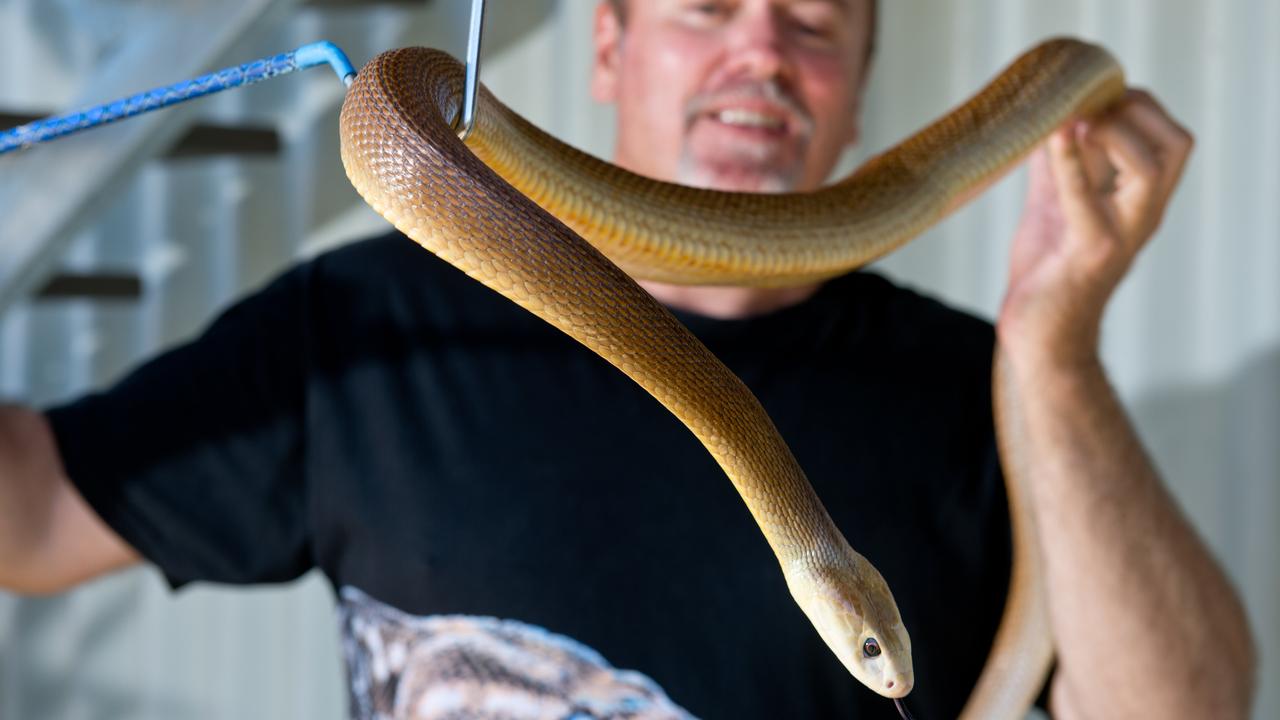Snakes can hear you scream, University of Queensland research shows
They might not have ears, but snakes can hear, new Australian-led research has found

READING LEVEL: GREEN
They might not have ears, but snakes can hear, researchers have found.
A University of Queensland-led study found that as well as ground vibrations, snakes can hear and react to airborne sound.
Three different sounds were played to captive-bred snakes one at a time in a soundproof room.

“Because snakes don’t have external ears, people typically think they’re deaf and can only feel vibrations through the ground and into their bodies,” said Dr Christina Zdenek, from the university’s School of Biological Sciences.
“But our research – the first of its kind using non-anaesthetised*, freely moving snakes – found they do react to soundwaves travelling through the air and possibly human voices.”

The study, involving 19 snakes from five genetic families, found the reactions strongly depended on the type of snake.
“Only the woma python tended to move toward sound, while taipans, brown snakes and especially death adders were all more likely to move away from it,” Dr Zdenek said.
“The types of behavioural reactions also differed, with taipans in particular more likely to exhibit defensive and cautious responses to sound.”

Dr Zdenek said the different reactions were likely because of evolutionary* pressures over millions of years, designed to aid survival and reproduction.
“For example, woma pythons are large nocturnal* snakes with fewer predators* than smaller species and probably don’t need to be as cautious, so they tended to approach sound,” Dr Zdenek said.
“But taipans may have to worry about raptor* predators and they also actively pursue their prey, so their senses seem to be much more sensitive.”

Dr Zdenek said the findings, published in the journal Plos One, challenged the assumption* that snakes can’t hear sound, such as humans talking or yelling, and could reshape the view on how they react to sound.
“We know very little about how most snake species navigate situations and landscapes around the world,” Dr Zdenek said.
“But our study shows that sound may be an important part of their sensory* repertoire*.
“Snakes are very vulnerable, timid creatures that hide most of the time, and we still have so much to learn about them.”
GLOSSARY
- non-anaesthetised: not given an anaesthetic to make them go to sleep and unable to feel
- evolutionary: to do with the process of gradual change or development
- nocturnal: active at night
- predators: animals that naturally hunt and eat other animals
- raptor: bird of prey, such as a hawk or eagle
- assumption: to think something is true without any proof
- sensory: to do with the senses of touch, smell, taste, hearing and sight
- repertoire: the range of skills or abilities that can be used
EXTRA READING
Deadliest snakes could save lives
Dino demise was good news for snakes
Aussie python celebrates World Snake Day
QUICK QUIZ
- Which university led this study?
- How many different sounds were played to the snakes?
- How many snakes were involved in the study?
- Which snake tended to move towards sound?
- Which snake tended to react defensively and cautiously to sound?
LISTEN TO THIS STORY
CLASSROOM ACTIVITIES
1. Snake comic strip
With the new-found knowledge that snakes can in fact, hear, create a six-part comic strip involving the different types of snakes mentioned in the Kids News article.
Time: allow 30 minutes to complete this activity
Curriculum Links: English, Visual Art, Critical and creative thinking
2. Extension
If snakes can hear, especially human voices, do you think there is a possibility that you could train them, like other animals?
If you could train a snake by voice, what would you teach it to do?
Time: allow 10 minutes to complete this activity
Curriculum Links: English, Science, Critical and creative thinking
VCOP ACTIVITY
Imaginative dialogue
Now that we know snakes can hear, imagine that you could have a conversation with a snake. What could the two of you talk about?
Don’t forget to try to use facts and details from the article to help make your dialogue as realistic as possible.
Go through your writing and highlight any punctuation you have used in green. Make sure you carefully check the punctuation used for the dialogue and ensure you have opened and closed the speaking in the correct places.

